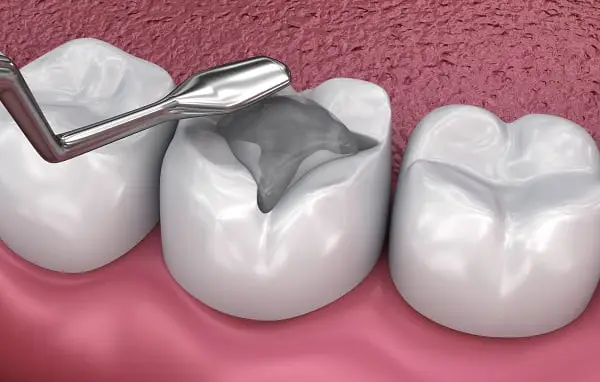Different Types of Tooth-Colored Fillings: A Complete Guide
A beautiful, natural-looking smile is essential for confidence and overall oral health. Traditional silver amalgam fillings have been widely used for decades, but advancements in dentistry have led to more aesthetic and durable tooth-colored fillings. These fillings blend seamlessly with your natural teeth, offering a more attractive and biocompatible solution. At Hadi Perfect Smile Dental Clinic, we specialize in offering the best filling materials to restore your teeth while maintaining a natural appearance.
What Are Tooth-Colored Fillings?
Tooth-colored fillings are restorative materials used to repair decayed, chipped, or fractured teeth. Unlike silver amalgam fillings, they are designed to match the natural color of your teeth, providing a more discreet and aesthetically pleasing result. They are also mercury-free, making them a safer option for many patients.
Benefits of Tooth-Colored Fillings
- Natural-looking restoration
- Mercury-free and biocompatible
- Strong and durable material
- Bond directly to the tooth structure
- Reduce the risk of fractures and tooth sensitivity
Different Types of Tooth-Colored Fillings
Here are the most common types of tooth-colored fillings used in modern dentistry:
1. Composite Resin Fillings
Overview: Composite resin is the most widely used tooth-colored filling material. It is made of a mixture of plastic and fine glass particles, providing excellent aesthetics and strength.
Pros:
- Matches natural tooth color
- Bonds directly to the tooth for added support
- Can be used for small to medium cavities
- Minimally invasive and preserves more tooth structure
Cons:
- Slightly less durable than other options
- May stain over time
2. Ceramic (Porcelain) Fillings
Overview: Ceramic fillings, often called inlays or onlays, are made from high-quality dental porcelain. They provide excellent aesthetics and durability.
Pros:
- Extremely natural-looking
- Highly resistant to stains
- Long-lasting (can last over 15 years)
- Biocompatible and non-toxic
Cons:
- More expensive than composite resin
- Requires more than one dental visit for placement
3. Glass Ionomer Fillings
Overview: Glass ionomer fillings are made from a blend of acrylic and fine glass powders. They release fluoride over time, helping to strengthen and protect the tooth from further decay.
Pros:
- Releases fluoride for added protection
- Good for children and cavity-prone teeth
- Bonds well to the tooth structure
Cons:
- Less durable than composite or ceramic fillings
- May wear down faster over time
4. Resin-Modified Glass Ionomer Fillings
Overview: This type of filling is an improved version of traditional glass ionomer, with added resin for better durability and strength.
Pros:
- Releases fluoride like glass ionomer
- More durable than traditional glass ionomer
- Better aesthetics compared to conventional glass ionomer
Cons:
- Not as strong or wear-resistant as composite resin or ceramic fillings
5. Compomer Fillings
Overview: Compomers are a hybrid material that combines the benefits of composite resin and glass ionomer. They offer a balance between durability and fluoride release.
Pros:
- Aesthetic appearance
- Releases fluoride for additional cavity protection
- Ideal for low-stress areas of the mouth
Cons:
- Not as strong as pure composite or ceramic fillings
- Limited application in high-pressure chewing areas
How to Choose the Right Tooth-Colored Filling?
Choosing the right filling material depends on several factors:
- The location of the cavity (front or back teeth)
- The extent of the decay
- Aesthetic preferences
- Budget and insurance coverage
- Longevity and durability expectations
During your consultation at Hadi Perfect Smile Dental Clinic, our expert Dr. Raza Abbas Zaidi will assess your needs and recommend the best filling option for your oral health and aesthetic goals.
The Tooth-Colored Filling Procedure
- Examination & Diagnosis – Your dentist will examine the tooth and determine the best filling material.
- Decay Removal – The decayed portion of the tooth is carefully removed.
- Filling Placement – The chosen filling material is applied, shaped, and hardened.
- Polishing & Finishing – The filling is adjusted for a comfortable bite and polished for a smooth, natural finish.
Caring for Tooth-Colored Fillings
To ensure the longevity of your fillings, follow these tips:
- Brush twice a day with fluoride toothpaste
- Floss daily to prevent plaque buildup
- Avoid chewing hard objects like ice or pens
- Limit staining foods and drinks like coffee, tea, and red wine
- Visit your dentist regularly for checkups and cleanings
Conclusion
Tooth-colored fillings provide a strong, safe, and aesthetically pleasing solution for dental restorations. Whether you choose composite resin, ceramic, glass ionomer, or compomer fillings, each option offers unique benefits to suit different dental needs. At Hadi Perfect Smile Dental Clinic, we are dedicated to providing high-quality, natural-looking restorations to enhance your smile and oral health.
Book your consultation today and experience the best dental care from Dr. Raza Abbas Zaidi and our expert team!
📞 +91-7011690245
🌐 www.hadiperfectsmile.in






